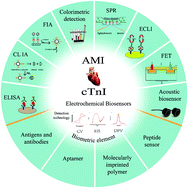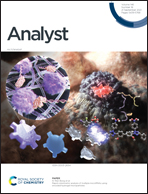Electrochemical strategies for the detection of cTnI
Abstract
Acute myocardial infarction (AMI) is the main cause of death from cardiovascular diseases. Thus, early diagnosis of AMI is essential for the treatment of irreversible damage from myocardial infarction. Traditional electrocardiograms (ECG) cannot meet the specific detection of AMI. Cardiac troponin I (cTnI) is the main biomarker for the diagnosis of myocardial infarction, and the detection of cTnI content has become particularly important. In this review, we introduced and compared the advantages and disadvantages of various cTnI detection methods. We focused on the analysis and comparison of the main indicators and limitations of various cTnI biosensors, including the detection range, detection limit, specificity, repeatability, and stability. In particular, we pay more attention to the application and development of electrochemical biosensors in the diagnosis of cardiovascular diseases based on different biological components. The application of electrochemical microfluidic chips for cTnI was also briefly introduced in this review. Finally, this review also briefly discusses the unresolved challenges of electrochemical detection and the expectations for improvement in the detection of cTnI biosensing in the future.

- This article is part of the themed collection: Analyst Review Articles 2021


 Please wait while we load your content...
Please wait while we load your content...